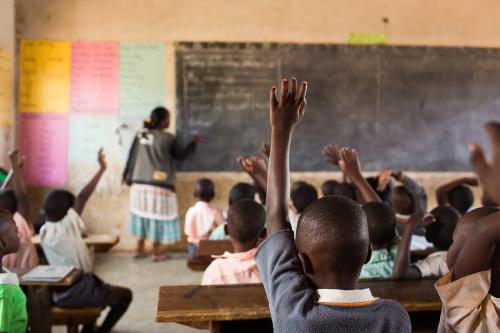The United Nations has set forth an ambitious vision for education systems around the globe: cultivating lifelong learning from early childhood through an individual’s civic and work life. Schools must support children and youth in basic learning—including crucial socio-emotional, literacy, and numeracy competencies—to contribute to sustainable societies. State-run education systems and their communities must now engage these global goals by 2030.
But in the wake of the global pandemic, virtually every country in the world is far behind. Prior to the pandemic, a severe learning crisis held back hundreds of millions of children. Analysts project that 9 out of 10 children in low-income countries and 5 out of 10 in middle-income countries will not develop core secondary education skills in literacy and numeracy by 2030. The pandemic has only deepened the learning crisis and widened achievement gaps.
By crisply defining what systems entail in the education sector and which levers yield organizational change, education leaders and their partners can do better in rethinking the aims of schooling and raising student achievement.
Specific country cases remain distressing: More than half of fifth grade students in India are not proficient in second-grade literacy. In Nigeria, just 1 in 10 girls completing grade six can read a single sentence in their native language. In the United States, children of African-American or Latino heritage attending fourth grade read at two grade levels below white peers on average.
Beyond deepening inequality in foundational learning, calls to rethink the underlying aims of education grow louder and more urgent. The next generation’s future—marked by global warming, fragile economic sustainability, and worsening inequality—requires new skills and wider awareness, too often poorly addressed in classrooms around the globe. The digital revolution has already shifted what and how children learn and explore and the knowledge pathways they maneuver—a radical change that many education systems fail to harness to advance learning.
Against this evolving backdrop, the global education community—catalyzed by the U.N. Secretary General’s Transforming Education Summit (September 2022)—is looking past recovering from the pandemic to consider full-scale system transformation. This blossoming policy discourse is replete with hopes for radically improving and transforming education systems. But how to define educational systems and then reshape them remains poorly defined. We cannot merely utter this ambitious goal without precisely defining how to surround the system, identify potent levers for change, and rethink the aims and means of human learning on a fragile planet.
INFORMING POLICY DEBATES
This brief informs these discussions of system transformation by reviewing the historical roots of systems thinking and what they contribute to education reform. It draws primarily on the intellectual traditions and literature in the Global North but also illustrates how these ideas have traveled to the Global South, in part through the work of organizations such as the World Bank. We recognize how elements of education systems may unfold quite differently across diverse societies—for example, rethinking how teachers are prepared and motivated to recast what students are expected to learn—and can draw from a range of cultural traditions. Our goals are simply to lift up how we think about systems and harness their strengths to rethink what children should learn and how classrooms and communities can better motivate achievement and civic engagement.
The brief is arranged in the following four sections:
- A short history of systems thinking, emphasizing the pressure points or organizational levers inside the education institution that touch classrooms.
- How systems thinking moved into the education sector (from biology and mechanics), along with how differing versions of systems reform take root and are conceptualized.
- Clarifying the various concepts and pathways associated with systems thinking in the education sector.
- Concluding reflections, informing how education leaders might interrogate system improvement and transformation efforts.
We summarize cases around the globe where systems thinking has yielded discernible gains for students and teachers. By crisply defining what systems entail in the education sector and which levers yield organizational change, education leaders and their partners can do better in rethinking the aims of schooling and raising student achievement.







